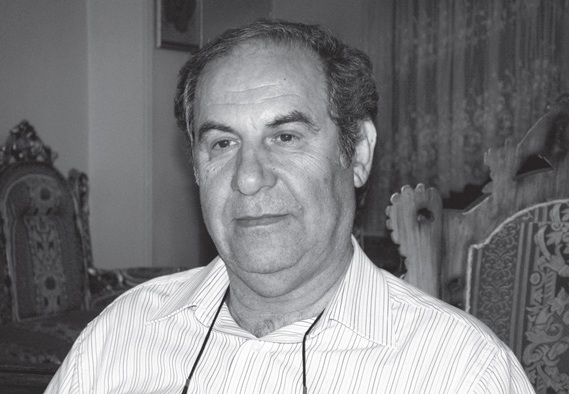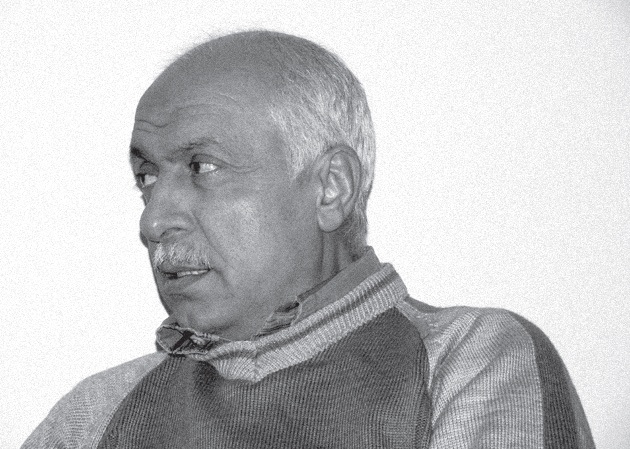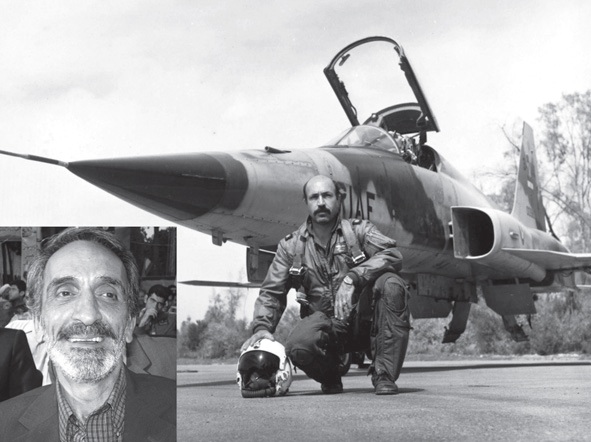Air Raid to Al-Waleed (15)
The Story of Demolishing Fighters and the Equipment in Al-Waleed Triple Military Bases Known as H-3
2016-4-17
Air Raid to Al-Waleed (H-3)
The Story of Demolishing Fighters and the Equipment in Al-Waleed Triple Military Bases Known as H-3
By: Brigadier General Ahmad Mehrnia
Tehran, Sooreh Mehr Publications Company
2010 (Persian Version)
Translated by: Zahra Hosseinian
Amir Brigadier General Pilot Iraj Osareh says:
"At that time, I was one of staff of Bandar Abbas base, and was present in Hamadan as an agent. Almost every month, one week we were on leave to visit our family. This time it was fifty days that I had not got leave. A few weeks ago, I attended the second mission which was canceled due to bad weather after refueling, and wouldn’t think to repeat so soon. For this reason, I requested for leave. Major Baratpour, operation deputy of base agreed with a little reluctant and I left the base. Next week, when I came back to work and heard that this big operation has carried out, really regretted that it was not to be present on that flight group. I had been close to tear and complained to Major Baratpour."


Phantom pilot Iraj Mohebi (2008) and second Brigadier General Yadollah Rastegarfar, then-operation deputy of Tabriz base (2009)
Second Brigadier General Pilot Mohammad Tayyebi stated in his memoirs:
"I had returned to Tabriz from Hamadan mission about three weeks. At 20:00, 28th March 1981, Major Yadollah Rastegarfar, operation deputy of base, phoned and asked me to go to the command post.
Five some of colleagues also were present there. He notified that we must travel to Hamadan base tomorrow morning. I didn't know what was going on. I went to sleep with a different thoughts. At the morning, I went to the operation region of base with my wife's send-off and kissing the Quran. A transport aircraft was available there to move us and we landed at Hamedan air base, Shahid Nojeh, very soon. Because nothing had been said about the type of subsequent missions and considering the previous missions of our colleagues, we thought that it is supposed to bomb targets with Phantoms whose INS [1] navigation system possibilities had less facility than F-5 aircrafts.
After greeting with F-5 pilots in the unit, said goodbye to them and went to the command post. We were welcomed by operation deputy of base, Major Baratpour who was waiting for us. After welcome, he asked us to be prepared for three flights - which each one included two aircrafts - to familiarize with the area, after having breakfast and taking a break. Three sorties, called Abuzar 1, 2, 3, were planned for 13:30, 14:30, and 15:30. The first flight group involved me and First Lt. Alireza Aieni. At 11 Am, a car had been sent to take us to the command post; we were justified there and then, returned to base after one hour and twenty-five minutes flight.

Col. Alireza Aieni and Second Brigadier General Mohammad Tayyebi (at the left) 2008
The other two flight groups flew at the appointed time. After the flight, we went to the flight battalion of F-4 pilots to see and greet them and had a friendly chat with them. None of them couldn't inform us about the content of next missions, because they themselves had heard nothing.
The next days, we kept doing our duty in the state of alert. At the end of the day, each group of two aircrafts carried out air cover flights, respectively, which aimed to be more familiarized with and protect the environment of region. It was thus maintained our skills.
The evening of 2nd April, Baratpour called me; I was responsible for the group's command. "Tomorrow we'll have an important mission," very general and without complete description, he said, "…and you must escort participant aircrafts and cover the region after sunrise to the end of mission." I saluted and said goodbye. Tomorrow, we implemented the mission successfully in accordance with the plan.
A few hours later we realized what a great event has occurred during the flight. Eight F-4 fighter/bomber aircrafts with a maximum of ammunition, had flew more than one thousand six hundred kilometers, and fired a strategic Base Complex of enemy near the Jordan border, and had inflicted a irreparable damage on it. This incredible mission, called Al-Waleed Operation or H-3, stunned the most expert and skilled military planners of the world; so that, they had been struck long time at how we did it and tried to find any information about it."
Today, when we put the pieces of puzzle of F-5 pilots' mission to Hamedan beside the rest of pictures, we come to conclusion that the mission had been planned in relation to the H-3 Operation from the outset; and during the implementation of all three times, F-5 fighters had been deployed to Hamadan multi-purposefully. One is that to increase the sortie flights of Hamadan to the extent that ten or more F-4 taking off in a day for the planned operation make no sensitivity for the enemy; and also cover the region near the base to secure flights to H-3 bases during the mission. During this period, a number of air strike operations were carried out in support of ground forces or independently, as previously mentioned [2] to deceive the enemy about the major operation.
In order to complete the flight factors, two Boeing 747 tanker aircraft must be deployed to and ready in Damascus, the capital of Syria, one day before the operation to complete the mission chain tomorrow morning, in accordance to previous arrangements. For this reason, Colonel Izadsete left Tehran along with second tanker.
Amir Baratpour points out:
"Before the leaving of Boeing 747 tanker from the border, to ensure the accuracy of refueling system, two successful refueling flights were carried out in insider region and then tankers moved toward targets."
To be continued…
1.INS navigation system is one of navigation device that shows pilot the direction and distance of multiple points which leads to target, without any radiation of electromagnetic waves. Despite gyro and high orbit (about twenty thousand rpm) the system will justify itself with the first geographical location of the stop point which is given to it; and show other points of interest according to that point. Therefore, it is undetectable to enemy.
2. On March 17, 1981, the Army did the Cheghalvand offensive operation in the West Country. This limited offensive operation was implemented to seize the heights and sensitive points in close contact lines. Cheghalvand heights, with 1118 meters summit, is the highest summit of Charmiyan heights in the West axis of Gilan-e Gharb to Qasr-e Shirin and provide the best position for monitoring and controlling the plain of Gilan, the axis of Gilan-e Gharb, Kuh Sefid, and Tang-e-Hajiyan. To seize the heights, Kermanshah Armored Camp Division-81 of the Islamic Republic of Iran Army, alongside with some units of IRGC in the region, began their offensive operation in the morning of March 17, 1981; and after about 48 hours, occupy all the planned targets and expelled enemy from the region. In the operation, the enemy had 50 killed, 150 wounded and 70 prisoners; and four tanks, a car, a crane machine, one pieces of artillery, and a considerable amount of equipment and weapons were also part of the enemy's losses. Air Force supported the operation with F-4 and F-5 bombers in combination from Third fighter base.
Number of Visits: 4562








The latest
- The Embankment Wounded Shoulders – 14
- An Eternal Lie!
- The 368th Night of Remembrance – Part 2
- Agents in Search for the Fighter
- The Embankment Wounded Shoulders – 13
- The Necessity of Standardizing Oral History and Criticism of General Mohsen Rezaei
- The 368th Night of Remembrance – Part 1
- Oral History News of Khordad 1404 (May 22nd – June 21st 2025)
Most visited
- Oral History News of Khordad 1404 (May 22nd – June 21st 2025)
- Najaf Headquarters Human Resources
- The Necessity of Standardizing Oral History and Criticism of General Mohsen Rezaei
- The 368th Night of Remembrance – Part 1
- The Embankment Wounded Shoulders – 13
- Agents in Search for the Fighter
- An Eternal Lie!
- The 368th Night of Remembrance – Part 2
How to send Imam's announcements to Iran
In the first part, the issue of funds, Hajj Sheikh Nasrallah Khalkhali - who represented most of the religious authorities - was also the representative of Imam. In Najaf, there was a money exchange office that cooperated with the money exchange offices in Tehran. Some of the funds were exchanged through him.Operation Beit al-Moqaddas and Liberation of Khorramshahr
After Operation Fat’h al-Mobin, we traveled to Kermanshah and visited Sar-e-Pol-e-Zahab before heading to Ilam. During Operation Beit al-Moqaddas, the 27th Brigade was still receiving support from the West. We maintained contact with individuals who had previously worked in Area 7 and were now leading the brigade. It was through these connections that I learned about Operation Beit al-Moqaddas.Memoirs of Hujjat al-Islam Reza Motalebi
Hujjat al-Islam Reza Motalebi is a cleric from Isfahan. Before the revolution, he was the imam of the Fallah Mosque – which was later renamed Abuzar Mosque. By his presence and efforts, Abuzar Mosque soon became a base for supporters of the Imam and the revolution. After the victory of the revolution, he played a role in uniting forces and maintaining political vitality in southwest Tehran.The Necessity of Receiving Feedback in Oral History
Whenever we engage in a task, we naturally seek ways to evaluate our performance — to correct shortcomings and enhance strengths. Such refinement is only possible through the feedback we receive from others. Consider, for instance, a basketball player whose shots are consistently accurate; should he begin shooting blindfolded, his success rate would rapidly decline, as he would be deprived of essential feedback from each attempt.

